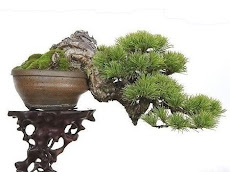
Photo:WikiMedia
By: Marcin Doliwa
A Chinese Elm bonsai is an extremely flexible variety of tree as it allows you to shape and style it anyway you want. These trees are very popular owing to the fact that they look perfect as miniatures, due to their rounded shape, fine twigs and small leaves. They have a modeled dark grey bark that has a coloring mixed with cream and red.
A Chinese Elm bonsai remains semi-evergreen as long as it is kept indoors. However, when they are grown as large bonsai trees, outside, they will turn into deciduous trees. A great thing about growing Chinese Elm bonsai is that, unlike other elm trees, Chinese elm is not prone to the Dutch elm disease.
The bark of the Chinese Elm is its most attractive aspect. With age, the appearance of the bark gets even more attractive, acquiring a fissured look that enriches the character of the bonsai. In case of this bonsai, you should remember that smoother the bark is, the weaker it is.
You can also grow the Chinese Elm bonsai on the ground for sometime, pruning and trimming it while it grows in the soil. This will help the trunk to get a stocky appearance, if you alternate the growth of the tree with regular chopping, through a period of a few years. Since this bonsai variety has a masculine look, you can give it a ragged and scarred or a hollow look by styling it.
Sunlight, water and fertilization
The Chinese Elm bonsai usually requires full sunlight or partial sunlight. Too much shade can lead to interior shoot die back, or growth of overlarge internodes. Only people, who live in places that have extremely hot summers, should keep this in partial shade.
During winter, you can keep some or all of the leaves of the tree. However, take care of the roots during the winter. This is because; the Chinese Elm bonsai has fleshy roots that can get damaged easily if they are allowed to get cold.
Never allow the soil in the bonsai pot to run dry, as this can severely damage the tree. Make sure to water the bonsai on a regular basis. Since, they grow fast, it requires proper fertilization. They should be fed every month, or twice every month, depending on the organic content of the fertilizer that you use.
Styling and repotting
Repotting of this bonsai must be done once every year for the first five years, after which you can repot it every couple of years.
The Chinese Elm bonsai can be styled into any shape and style. You must use bonsai wire to give it the desired shape. You can also achieve a multi trunk style by wiring together a number of branches of the tree.
Author is bonsai enthusiast. For more information please visit http://bonsaidojo.com
Article Source: http://EzineArticles.com/?expert=Marcin_Doliwa




No comments:
Post a Comment